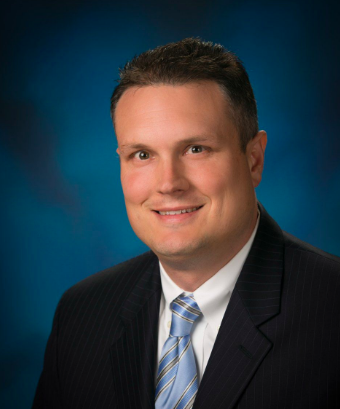
Leading Blended Learning from the Front Row
Many people enjoy sitting in the front row while attending a movie they have not seen before. This is exactly how I would describe the experience of leading Blended Learning from the district-level. As a district administrator, you are expected to sit in the front row; and in many respects, Blended Learning is a movie that most in education have not seen before.
There are always pockets of innovative teachers utilizing different models, but without district leadership, these are usually relegated to the self-directed, technology-savvy teachers and often plateau due to lack of resources and formalized training. In Temple Independent School District we have led a district-wide Blended Learning Initiative from the front row – and in my mind, this approach optimizes impact and success. Every approach to district-led initiatives is situational and really depends on several variables, such as a trusting culture between campus and district staff, timing, and resources to name a few.
Temple ISD is a school district in central Texas with an enrollment of around 9,000 students. It is an urban district with economic range (over 70% free and reduced lunch) and ethnic diversity. Temple ISD has a portfolio of successful programs that include Fine Arts, Athletics, Career-Tech, and Advanced Academics (IB Programs). Some of these programs include a large volume of students, but none of them alone include every student. However, the use of technology does. This is precisely one of the reasons Blended Learning would make the largest impact on our students.
Below I have outlined the path Temple ISD used to initialize this process; and although there is no single prototype, this may be something you can use in part or in its entirety.
- Identify a Clear Need that is Part of an Existing Journey – If you were to review all of the initiatives in our district since 2012, they have revolved around two themes – more time and better relationships. In an urban district, there is always a need for more time due to students having an experienced background prior to entering school. Initiatives around the theme of “more time” include full-day PreK, extended school days, built-in Response to Intervention (RtI) periods, double-block math courses, etc. Around the theme of “better relationships”, you will find Restorative Discipline, Trust-Based Relational Intervention (TBRI), and so on. In Temple ISD we were able to tie Blended Learning into supporting our efforts around “more time” and “better relationships”. We leveraged more time because students are able to receive instruction outside of the regular classroom through various BL models, especially when working with absenteeism. It betters relationships in the classroom because you will find more motivated learners when teachers are facilitators as opposed to knowledge pushers. Google has taken over “knowledge push,” and we must adapt to a facilitative role, stretching learning into higher order experiences.
-
Establish a District-wide Blended Learning Council – This group brings instant credibility to the initiative. The membership composition of this council included an admin leader from every campus level, and we facilitated sessions with the BL Council over the course of the year. The charge was to develop the rally documents that include the BL vision, mission, communication plan, support plan and implementation plan.
-
District Leader Presents District Overview – This would include “Why Blended Learning” and a thought out plan for participation. This presentation can be available upon request. A district administrator that is responsible for principals needs to take the lead on the presentations as opposed to a department.
-
Pilot the Initiative – You can do this through a grant or internally. It is important to gather a pilot group that is undersized so you ensure they are well-supported. When all presentations to campuses are concluded, allow the principals to work with teachers and select a cohort. The only caveats to selection are to ensure the cohorts are teams that work together - by grade-level or content. By default this design provides a layer of support for teachers and a team to work together. The second caveat is to only support one to two BL Models per year. Several models at launch could easily dilute your support and become an unmanageable model of training.
-
Support and Reflect – This looks different in many districts. We started at the highest levels and conducted a school board retreat where board members participated through BL activities as a learner. Next, we hosted a Technology Showcase with our pilot classrooms which board members toured with administrators. This secures your highest-level resource providers. District and campus administrators have very regular support sessions where an outside consultant facilitates conversations around initial findings and implementation challenges. Teachers are part of a long-term training program with Education Elements that includes design, launch and implementation sessions. These are sprinkled in installments throughout the year and parlay days that teachers were already obligated through campus and district training days. This training outline is available upon request.
These five steps provide a simplified version of Temple ISD’s implementation model. As we progress into subsequent years we will add more BL cohorts. I welcome discussions, direct contact or any requests for materials that may be helpful. The momentum in Temple ISD is high and we look forward to successful student outcomes.
About Dr. Bobby Ott
Dr. Ott has served as a lead member for curriculum and policy efforts for the Texas School Alliance and received a Governor appointment in 2009 to serve on the State Advisory Council for Early Childhood. He is currently a state-level member of the Texas Association of School Administrators Central Office Advisory Committee, the Texas Education Agency Steering Committee for Principal Evaluations and was recently named to the TASA 2025 Task Force. He was also appointed as a member of the Texas Music Educators Association (TMEA) State Advisory Council.


